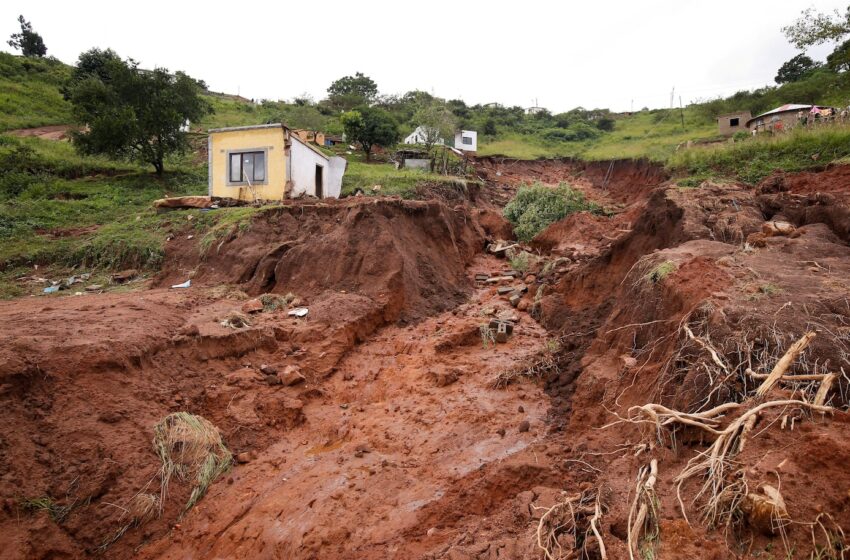
South Africa searches for the missing as flood damage comes into focus

“The people had been waiting for rescue teams to come for three to four days, and they never came, so they decided to go search for their loved ones,” said Khulekani Kunene from the Gift of the Givers Foundation, which has been delivering aid to the area.
Record-breaking rains last week inundated the region around the port city of Durban in KwaZulu-Natal Province, including rural areas where rushing floodwaters collapsed hillsides and swept away huts made from wood and mud.
The government lowered the official death toll Thursday to 435, down from 448, but said it could not confirm how many people are missing. Aid groups fear dozens are still unaccounted for. Thousands have been left homeless.
“Their homes were completely washed away with all of their belongings and it’s going to take time for them to recover,” Kunene said. “The worst part was that this rain came at night when everyone was sleeping.”
The hardest-hit areas were informal settlements built close to the water’s edge, below flood lines, he said. Parts of KwaZulu-Natal are now without power and water, and some areas are difficult to reach because of damage to bridges, roads and rail lines. Flooding also disrupted operations at one of Africa’s busiest ports in Durban.
Local government officials and businesses estimated damage from the floods could reach hundreds of millions of dollars in an area that is still recovering from destructive political riots in July.
Last week, President Cyril Ramaphosa toured the disaster zone, where he blamed climate change and declared a national state of emergency. “You’re not alone,” he told survivors on April 13. “We’ll do everything in our power to see how we can help.”
But the tragedy could not have come at a worse time for South Africa, which is already struggling with high unemployment and soaring inflation. The country has also been hit by rolling power blackouts caused by breakdowns at its state power utility. And there are worrying signs of a coronavirus resurgence, as new cases increased sharply Thursday, including in KwaZulu-Natal.
The South African National Defence Force said it would send 10,000 troops to the province to transport aid and help with rescue and recovery efforts. But as floodwaters receded and mud hardened around tons of debris in the rivers, finding bodies became more difficult.
Shawn Herbst, spokesman for the Netcare 911 private health service that supplied a helicopter to transport patients from critical areas, said police and military search-and-rescue teams continued to scour the region. “There is desperation on people’s faces and some are inconsolable,” he said.
KwaZulu-Natal has a history of heavy rains and flooding, often caused by a “cut-off low” weather system that occurs frequently off the coast of South Africa, said Francois Engelbrecht, a climate scientist at the University of the Witwatersrand.
The storm on April 11 dumped nearly 12 inches of rain in just over 24 hours, he said, eclipsing one-day rainfall totals from previous disasters, including the 1987 Durban floods that killed as many as 500 people. A 2019 storm in the Durban area left at least 80 dead.
“I do think climate change played a role in making this system even more intense than it was supposed to be,” Engelbrecht said. “The only solution in the long term to get out of these vulnerabilities is to improve the infrastructure, to give people better housing and ensure no one builds below flood lines.”
